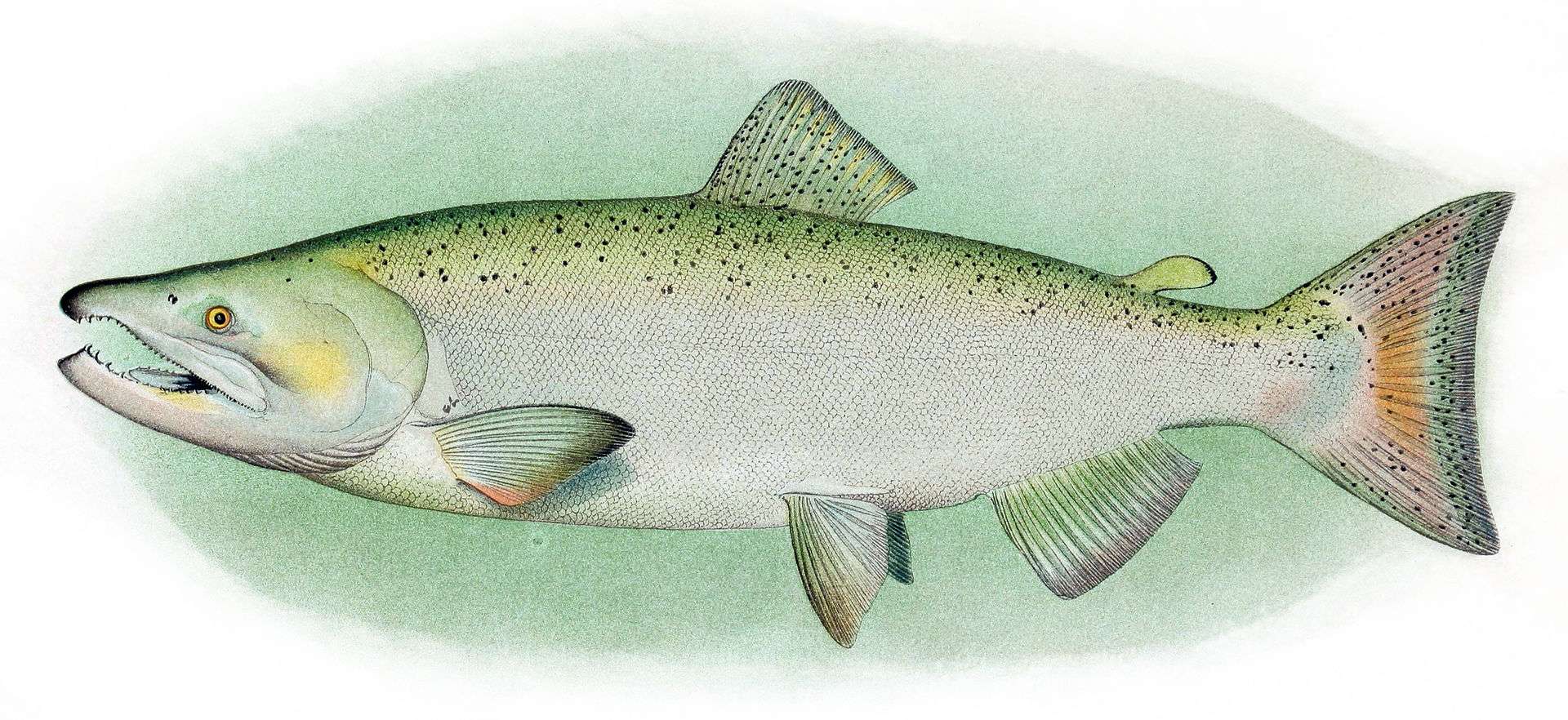Image Credit Wikipedia
The Chinook salmon (Oncorhynchus tshawytscha), also known as king salmon, undergoes a fascinating life cycle that includes several distinct stages. The life cycle of Chinook salmon is anadromous, meaning they are born in freshwater, migrate to the ocean to grow and mature, and then return to freshwater to spawn. Here is an overview of the life cycle of Chinook salmon:
- Egg Stage (Spawning):
- Adult Chinook salmon return to the freshwater rivers and streams where they were born to spawn.
- Spawning typically occurs in the fall or early winter.
- Female Chinook salmon dig nests called redds in gravel beds where they deposit their eggs, and males fertilize the eggs.
- Alevin Stage:
- After fertilization, the eggs develop into alevins while still in the gravel.
- Alevins have a yolk sac attached to their bodies, which provides nutrients during this early stage of development.
- They stay hidden in the gravel until they absorb the yolk sac and develop into fry.
- Fry Stage:
- Once the yolk sac is absorbed, the young Chinook salmon, now called fry, emerge from the gravel and begin to swim and feed.
- Fry spend some time in freshwater, growing and developing.
- Smolt Stage:
- As the fry grow, they undergo physiological changes that prepare them for the transition from freshwater to saltwater.
- This stage is called smoltification, and the fish are now referred to as smolts.
- Smolts migrate downstream to estuaries and then into the open ocean.
- Ocean Stage:
- In the ocean, Chinook salmon spend several years feeding and growing.
- They can cover significant distances during this stage, and their diet mainly consists of other fish and marine organisms.
- Adult Stage:
- After spending a variable number of years in the ocean, adult Chinook salmon begin their migration back to freshwater for spawning.
- The return migration is triggered by environmental factors, including changes in day length and water temperature.
- Spawning Stage (Repeat):
- Upon reaching freshwater, adult Chinook salmon migrate upstream to the same or nearby areas where they were born.
- They spawn, and the cycle begins again.
After spawning, most Chinook salmon die, completing their life cycle. The eggs they deposit in the gravel will hatch, and the alevins will grow into fry, continuing the population cycle. The ability of Chinook salmon to navigate long distances and adapt to both freshwater and saltwater environments is a remarkable aspect of their life cycle.
Chinook salmon are known for their impressive migration journeys, and they are capable of traveling considerable distances during their life cycle. While the exact distance covered can vary among individual fish and populations, it's not uncommon for Chinook salmon to migrate thousands of kilometers. Some populations undertake migrations of up to 3,000 kilometers or more.
Here's a general overview of their migration distances:
- Freshwater to Ocean:
- After hatching in freshwater rivers or streams, young Chinook salmon (fry) make their way downstream to estuaries and eventually into the open ocean. This downstream migration can cover a significant distance, depending on the location of their natal stream.
- Ocean Phase:
- In the ocean, Chinook salmon can travel thousands of kilometers as they roam and feed in marine waters. The duration of their ocean phase can vary, with some spending one to several years in saltwater.
- Return to Freshwater:
- The most impressive part of the migration is when adult Chinook salmon return from the ocean to their natal freshwater streams to spawn. This upstream migration can cover long distances, and some individuals might travel thousands of kilometers against strong river currents.
The ability of Chinook salmon to navigate such vast distances during their life cycle is a testament to their remarkable physiological adaptations. Their migration is often considered one of the most epic journeys in the animal kingdom. The specific distances covered by Chinook salmon can vary based on factors such as the location of their spawning grounds, the availability of food in the ocean, and environmental conditions.
News, Health, Travel & Entertainment Telegram Channel Click to Join Infimor
